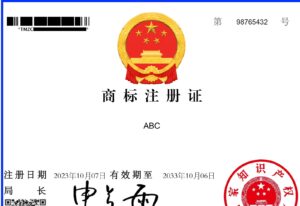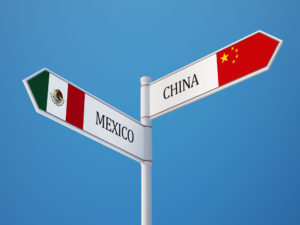Whenever clients ask about filing a trademark in China via the Madrid System, my answer is simple: filing a national application directly with the Chinese Trademark Office (CTMO) is better.
The Chinese trademark system is complicated: at once idiosyncratic and highly regimented, and overseen by capricious examiners. But the one-size-fits-all Madrid application elides all of this and makes registering a trademark in China seem easy; all you must do is check a box marked “China.” As a result, Madrid applicants are lulled into a sense of complacency, and all too often the result is a rejection that could have been avoided with a national application in China. Madrid applications are supposed to be cheap and quick, but fixing Madrid problems after the fact is neither. This problem is exacerbated by U.S. lawyers who are comfortable with filing in Madrid but have no experience filing in China.
Trademark prosecution in China is highly mechanical. For the vast majority of applications, you file an application, wait 10-14 months, and at the end of that time your trademark is either registered or rejected. (A slight oversimplification, but not by much.) There is no CTMO equivalent to a USPTO office action, no back-and-forth with trademark examiners, and no chance to amend an application that has been filed.
For this reason, the meaningful work for Chinese trademark applications occurs before the application is filed.
First of all, it is essential to conduct a pre-application trademark clearance (a.k.a. a trademark screening) to assess the trademark’s registrability. Is the mark inherently distinctive? Does it run afoul of China’s statutory prohibitions on trademarks? Does it conflict with any preexisting trademarks?
Next, assuming the screening results don’t scare you away, you must determine which class(es) to file in and the specific products or services (“items”) to be covered by the mark. This is a lot trickier than it sounds because the CTMO divides each Nice class into a unique system of subclasses. For purposes of trademark registration, each subclass is treated discretely: a trademark for one item in a given subclass covers all items in that subclass, but is not effective on items in any other subclass.
To see how this works, let’s look at Nice Class 41, for which the official heading is “Education; providing of training; entertainment; sporting and cultural activities.” The CTMO divides Class 41 into seven different subclasses:
Subclass 4101 – education
Subclass 4102 – organizing educational, cultural, and recreational activities
Subclass 4103 – library services
Subclass 4104 – publishing services
Subclass 4105 – sports and entertainment services
Subclass 4106 – animal training
Subclass 4107 – otherwise uncategorized services.
Because Class 41 has seven subclasses, that means that seven identical trademarks, each held by a different entity, could theoretically coexist in Class 41. To show how this can work, I did a search of the trademarks in Class 41 for “MGM” and found that four different entities have filed applications:
(1) Marilyn Licensing Corp. has registered “MGM” in subclass 4107;
(2) A Chinese company, Great Wall International Communication Co. Ltd, has registered “MGM” in subclasses 4102 and 4104;
(3) Metro-Goldwyn Mayer Lion Corp. has registered “MGM” in subclasses 4101 and 4105, and (needlessly) again in subclass 4105; and
(4) MGM Resorts International has attempted to register “MGM” in all seven subclasses, but will almost certainly be rejected in all but subclasses 4103 and 4106 because of the conflicting prior registrations.
When you file a China national application, you determine the subclasses that you want your application to cover. But when you file a Madrid application, your list of items goes straight to a CTMO trademark examiner, who will decide from your list which subclasses the items should go in without consulting you. This lack of consultation, combined with the examiners’ often-tenuous grasp of English (or French or Spanish), means that imprecise descriptions of items can lead to problems of both overinclusiveness and underinclusiveness.
The application filed by MGM Resorts International was overinclusive because it attempted to cover all of the services in the class when most of the subclasses were already taken. But it could have been worse: it could have been a Madrid application. Because MGM Resorts filed a national application, it will only be rejected with respect to services in subclass 4101, 4102, 4104, 4105, and 4107. If it had been a Madrid application with an overly broad description of services, the CTMO examiner could have decided that the services covered all subclasses, and then the entire application would have been rejected.
Surprisingly, attempting to cover all items in a class can also result in underinclusiveness. We see this most often with a description of items that mirrors the official Nice class headings – because the official Nice class heading usually only covers some of the subclasses for that class. For instance, the official Nice heading for Class 25 products is “clothing, hats, and shoes.” If you filed a Madrid application with that description of products, you might think that your trademark would cover all products in Class 25, but in fact your trademark would not have any protection for socks, scarves, gloves, or belts. According to the Chinese subclass system, none of those are considered “clothing.” This sort of mistake is quite commonly made by trademark lawyers not familiar with China’s trademark system.
Apple Computer famously ran afoul of the “underinclusive” problem when it registered a Class 9 trademark for “IPHONE” in 2002 as covering computer hardware and computer software. Unfortunately for Apple, cellphones were in a different subclass, and in 2004 a Chinese company, Hanwang Technology, registered “I-PHONE” to cover cellphones. Because iPhone was not a famous trademark in China in 2004, Apple had to pay off Hanwang to gain ownership of the trademark.
It is possible to perform a pre-application screening before filing a Madrid application, and it is possible to craft a description of items in a Madrid application that will conform to the Chinese subclass system. But this requires working with an experienced China trademark attorney or agent, and it will cost nearly as much and take nearly as much time as a national application. In other words, you lose all of the advantages of the Madrid System, but keep all of the disadvantages.
Finally, even if your Madrid System trademark is registered in China without a hitch, you may still have trouble enforcing your rights. Upon registration, the only formal certificate for Madrid System trademarks is the one issued by WIPO. China does not issue its own separate trademark certificate. In theory, this should not be a problem, because the WIPO certificate should be sufficient to enforce your trademark rights under Chinese law. In practice – and I realize this may come as a shock to some readers – Chinese bureaucrats and e-commerce customer service reps generally could care less about China’s WTO obligations. Much of the time, before they will lift a finger against an infringing factory or website, they will demand a copy of a CTMO-issued Chinese trademark certificate. It is easy enough to request a Chinese trademark certificate based on a WIPO registration, but it takes another three to five months to get one. That can feel like an eternity when your trademark is being knocked off.
If a client has an extremely precise and limited list of items and is already filing a Madrid application for a number of countries, then I might consider adding China to that list. But for the majority of clients, it does not make sense. The CTMO is fickle enough with national applications. Why make things more difficult by filing a Madrid System application?

























